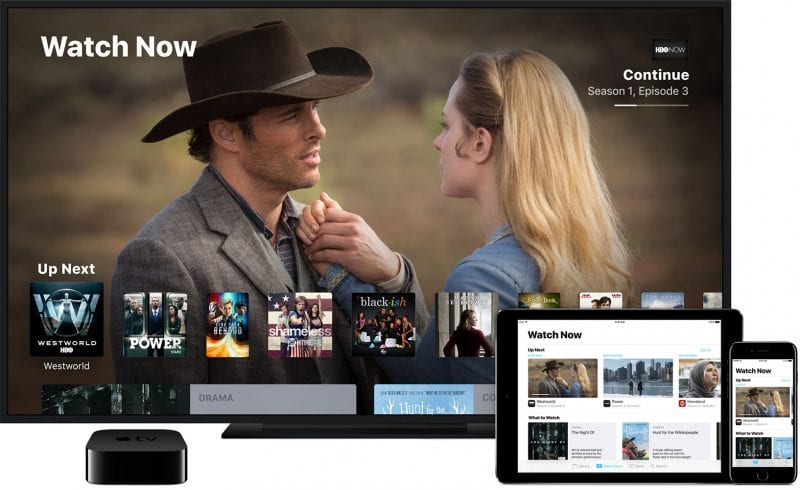video
Next on Netflix: Advertising?
Netflix is still the king of streaming, but will its subscription-based model be able to sustain the business as cheaper, ad-supported platforms enter the streaming space? The company kicked off 2019 by announcing price increases of 13% to 18%. And that made a lot of subscribers unhappy. According to Streaming Observer, 27% of US Netflix subscribers said they are either considering canceling or will definitely cancel their service because of the recent rate hike. More than half of those surveyed, however, said they were open to an ad-supported option at a lower cost.
Source: Next on Netflix: Advertising? – eMarketer Trends, Forecasts & Statistics
Child Stars Don’t Need Hollywood. They Have YouTube
Welcome to the Age of Kidfluencers. It’s not as weird as you think.
Source: Child Stars Don’t Need Hollywood. They Have YouTube | WIRED
Facial Recognition Has to Be Regulated to Protect the Public, Says AI Report
Artificial intelligence has made major strides in the past few years, but those rapid advances are now raising some big ethical conundrums. Chief among them is the way machine learning can identify people’s faces in photos and video footage with great accuracy. This might let you unlock your phone with a smile, but it also means that governments and big corporations have been given a powerful new surveillance tool. A new report from the AINow Institute (large PDF), an influential think tank based in New York, has just identified facial recognition as a key challenge for society and policymakers.
Source: Facial Recognition Has to Be Regulated to Protect the Public, Says AI Report
For the Win: Out-of-Home Viewers of Fall Sports on Linear TV Watch in Multiple Locations and are Engaged
Younger consumers, typically Millennials, are always on the go—from visiting family to working out to connecting with colleagues at happy hour. While they live busy lifestyles, they also like to stay connected to what’s happening with their favorite sports teams. And that means these highly engaged viewers look for ways to stay connected to the latest scores and catch a game regardless of where they are.
The Super Bowl dominates TV — and it will crush it in VR, too
VR has had early success in the world of live events, with platforms like NBA + Intel True VR and NextVR. These technologies allow viewers to get a 360-degree VR view courtside or from midfield and provide a way for fans to virtually attend an event, even if they can’t can’t travel to see their favorite team or aren’t able to pay full price for a ticket. But the challenges with video resolution on today’s VR devices and high-bandwidth requirements for rich 360-degree content make this a nonstarter for broad consumption. Tech and sports enthusiasts might suffer through these limitations to watch a regular season game in a new way, but the Super Bowl is something different altogether.
Source: The Super Bowl dominates TV — and it will crush it in VR, too
Super Bowl commercials 2019: It’s the year of the sad robot
Robots and artificial intelligence are everywhere in 2019’s crop of Super Bowl commercials. Some of the devices are seriously bummed out.
Source: Super Bowl commercials 2019: It’s the year of the sad robot — Quartz
Why Netflix changed the intro to its original programming
These little audio visual preambles offer the on-screen equivalent to liminal space. In architecture theory, a liminal space is essentially a transition between one space and another. When you walk into a movie theater, you don’t actually walk directly from the parking lot, through a door, and into a room with seats and screens. First, you walk through the concourse, maybe buying some popcorn–which boosts the theater’s bottom line, okay. But the concourse also gives your mind a cleansing area, to shake off the stress of the day and prepare you to sit for two hours in a dark room. This is exactly the experience Netflix wants to create, just without the building or the popcorn.
Source: Why Netflix changed the intro to its original programming
Tim Cook Says Apple Plans to Participate in the ‘Breakdown of the Cable Bundle’ With AirPlay 2, Original Content and More
Apple CEO Tim Cook today commented on the opportunities Apple sees in the video market, though he declined to provide details on the company’s specific plans.
Cook said that Apple sees “huge changes” taking place in customer behavior, which the company expects to “accelerate as the year goes by.” Specifically, Cook said that Apple is expecting an acceleration of the breakdown of the cable bundle. “I think it’ll likely take place at a much faster pace this year,” he said.
How Will TV Advertising Become More Data-Driven?
-
TV ad buying is unlikely to follow the real-time bidding (RTB) model that became popular with digital advertising.
-
However, many advertising tasks, including reporting, creative placement and measurement, are likely to become more automated, according to Nicolle Pangis, CEO of NCC Media.
Laying the Pipes of a Post-Advertising World
The shift from brands and advertising to pipes and subscriptions is inevitable — and well underway. Want proof? Look to Disney.
Source: Laying the Pipes of a Post-Advertising World – NewCo Shift – Medium
How Brands Turned Trolling Into a Marketing Strategy
We were once responsible for describing our own tastes, which meant we sometimes lied about them. At the very least, we had strategically selective memories.
But streaming services have put an end to that. Each year-end now brings massive number dumps from the likes of Spotify and Netflix, as if to remind us exactly how much personal information they can hoover up through users’ relationship to entertainment. Perversely enough — and to a strange acclaim in the world of creative marketing — these two digital giants have used their extensive findings to roast their outlying customers.
Source: How Brands Turned Trolling Into a Marketing Strategy
What Made the TV Show ‘You’ a Hit? Netflix
Could the numbers be believed? Could it be possible that a show that premiered on cable television may as well not have existed until Netflix — which now has 139 million paying subscribers, including 58.5 million in the United States — came around to stream it? Netflix is already a television network and a movie studio. Was it one step closer to effectively becoming television itself?
As Daniel D’Addario, a TV critic for Variety, posited, “‘You’ flailing on Lifetime and being treated by the viewing public as a Netflix original is going to be remembered as a major turning point in what will shortly be a contraction of the TV industry.”
Source: What Made the TV Show ‘You’ a Hit? Netflix – The New York Times
Netflix Content Spending Expected to Hit $15 Billion in 2019
Netflix’s binge-spending on content isn’t expected to slow down.
The streamer spent a whopping $12.04 billion in cash on content last year, up 35% from $8.9 billion in 2017, according to its fourth-quarter 2018 earnings report.
For the year ahead, Wall Street analysts see that climbing 25% — to around $15 billion on a gross cash basis. Netflix will continue to burn cash, telling investors Thursday that it expects to record negative $3 billion in free cash flow in 2019 (similar to last year), and that it intends to continue to turn to debt markets to fund the spending rate. The company had $10.4 billion in long-term debt at the end of 2018, versus $6.5 billion year earlier.
Source: Netflix Content Spending Expected to Hit $15 Billion in 2019 – Variety
Netflix has a new growth story to pitch
Netflix is big. But it wants investors to know it can get bigger — in more ways than one.
Source: Cheatsheet: Netflix has a new growth story to pitch – Digiday
Verizon is testing Netflix-style game streaming, possibly for 5G
Verizon is currently testing a streaming games service that could compete with similar upcoming offerings from Microsoft, Nvidia, Amazon, and Google.
Source: Verizon is testing Netflix-style game streaming, possibly for 5G
The Digital Commons: Tragedy or Opportunity? A Reflection on the 50th Anniversary of Hardin’s Tragedy of the Commons
Garrett Hardin’s Science article “The Tragedy of the Commons” 50 years ago focused on a physical world where common goods are finite and rivalrous. By contrast, this paper explores the digital commons, calling for better understanding of its long-term impact and for government policies supporting benefits while mitigating costs.
How Streaming TV Will Change (For Better or Worse) in 2019
Services like Netflix are gaining competition with new platforms from Apple, Walmart and more.
Source: How Streaming TV Will Change (For Better or Worse) in 2019 | Television | nwitimes.com
CES 2019 Preview: 6 Biggest Trends to Watch
From TVs you can roll up like a poster to 5G networks that are finally getting real, these are the biggest trends we expect to see at CES 2019.
Netflix Must Create Ad Model or Raise Prices
Netflix announced that their original movie ‘Bird Box’ generated over 45 million streams in just the first week making it the best first 7 days ever for a Netflix film. However, some analysts say that their $12 billion in debt and mounting costs will require Netflix to either raise subscription prices again or create an advertising model.
22 predictions for social media in 2019
What to expect from Facebook, Twitter, YouTube, and more















